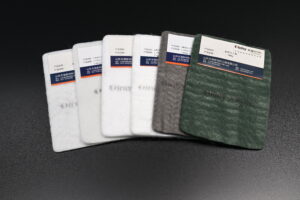What types of geotextiles are there?
Geotextile is a special material used in the fields of civil engineering, water conservancy engineering and environmental protection, and is used for reinforcement, isolation, filtration, seepage prevention and other purposes.
What types of geotextiles are there?
Non-woven geotextile (Non-woven Geotextile): It is made of continuous fibers through mechanical spinning, hot-melt and other processes, and has the characteristics of non-directional and non-layered. Usually used in separation, filtration, reinforcement and soil anti-corrosion and other projects.
Woven Geotextile: Woven from high-strength polypropylene or polyester fibers, it has high tensile strength and tear resistance. Commonly used in separation, reinforcement, filtration, protection and other projects.
Needle-punched Geotextile: It is manufactured by consolidation of polyester or polypropylene fibers through a needle-punching process to form the interweaving of fibers and the connection of discrete fibers. With excellent drainage performance and filtering function, it is often used in soil drainage and isolation layer projects.
Geocomposite Geotextile with a membrane layer: a composite material composed of a geotextile and a protective layer, an impermeable membrane or a drainage grid. Commonly used in anti-seepage, drainage and reinforcement projects.
In addition, there are some special-purpose geotextiles, such as straw mat geotextiles, grass fiber geotextiles, etc., which are used for specific projects such as soil water retention, plant growth, and soil erosion control.
Each geotextile has its unique performance and application fields, and the selection of the appropriate type of geotextile should be evaluated based on comprehensive factors such as specific engineering requirements, soil conditions, and geological environment.
Geotextile installation steps can vary according to specific project needs and application methods.

Seven installation steps for geotextiles
Preparations: Before starting to install the geotextiles, the construction site needs to be prepared. This includes clearing and leveling the land surface, removing sharp objects and obstructions, and ensuring the soil surface is even.
Size cutting: according to the engineering needs, the geotextile is cut according to the design requirements and size.
Laying and positioning: Lay the geotextile on the engineering ground according to the design requirements. Ensure that the geotextile is laid flat and firm, and fix it on the ground as needed. Commonly used fixing methods include ground nails, U-shaped nails, etc.
Interfacing: For large areas of geotextile laying, interfacing may be required to ensure continuity and integrity between geotextiles. Common interface connection methods include hot-melt welding, sewing, bonding, etc.
Edge treatment: For the edge of the geotextile, proper treatment is performed to enhance the stability of the edge and prevent the geotextile from being damaged during use. Commonly used edge treatment methods include edge folding, fixing with reinforcing tape, laying surface filler, etc.
Filling and covering: After the geotextile is laid, fill and cover it as needed. Soil fill can be used to reinforce geotextiles, increase surface stability, and protect geotextiles from external forces.
Engineering acceptance: After the geotextile installation is completed, the engineering acceptance and quality inspection will be carried out. Check the laying quality, fixation, interface connection, etc. of the geotextile, and ensure that it meets the design and specification requirements.

